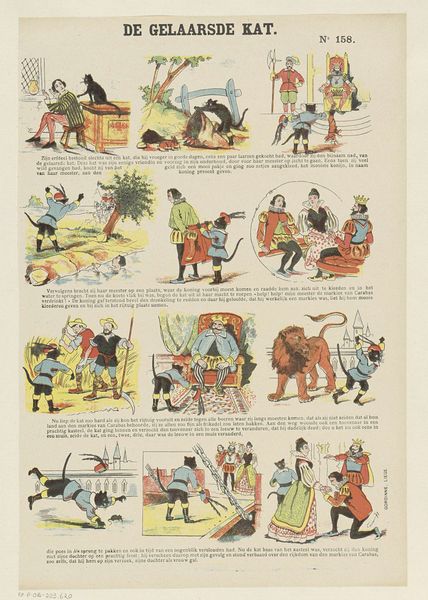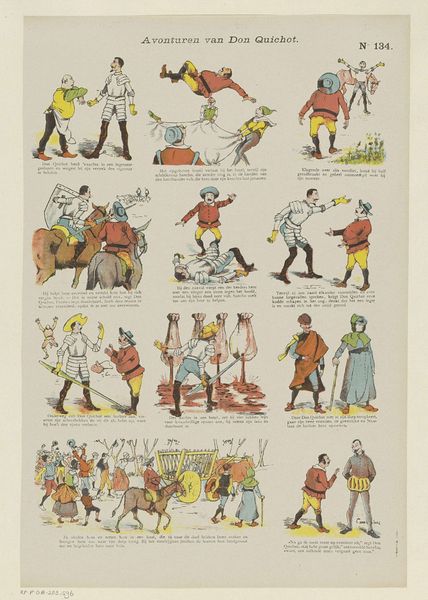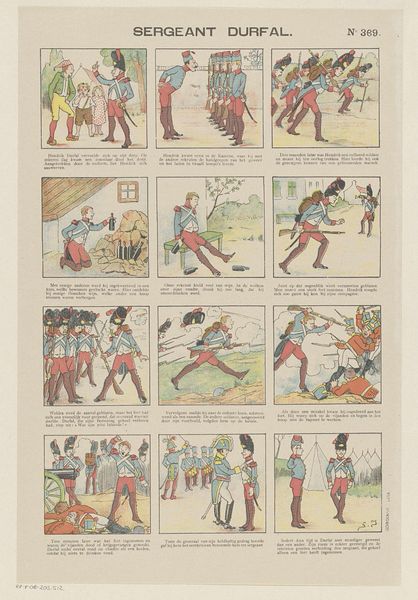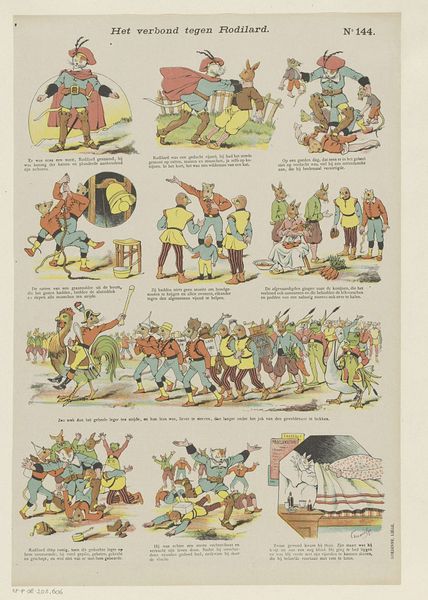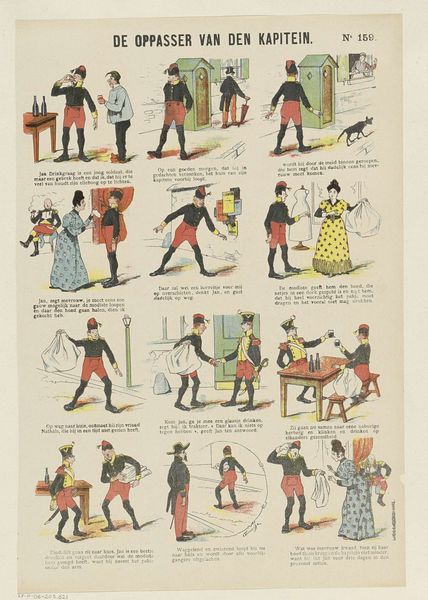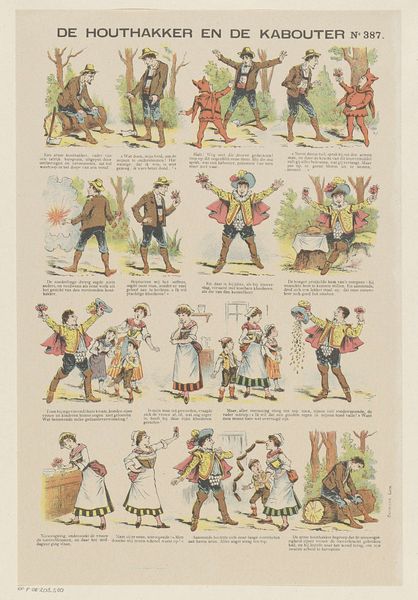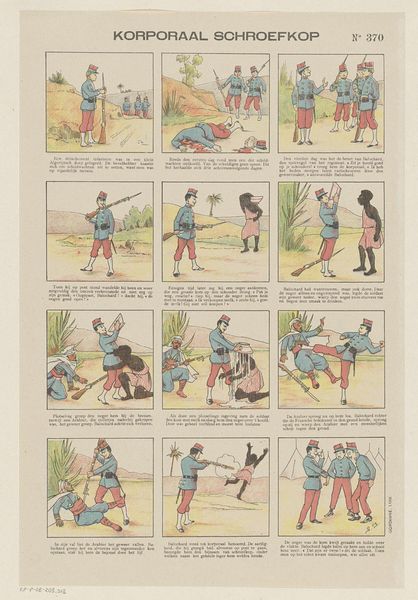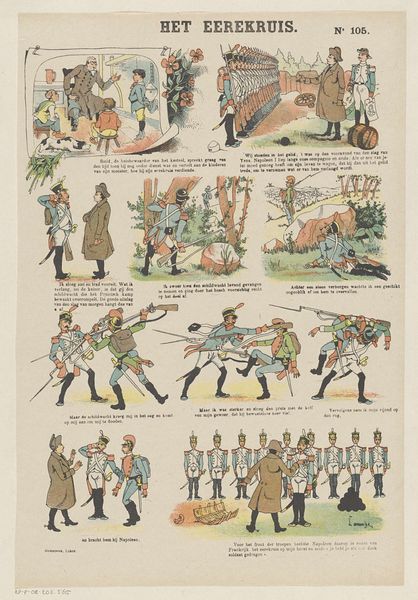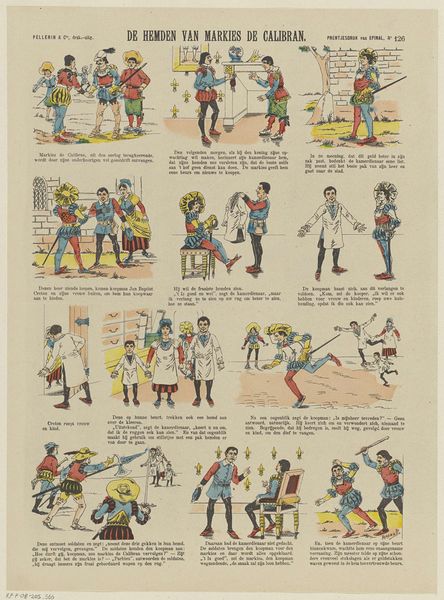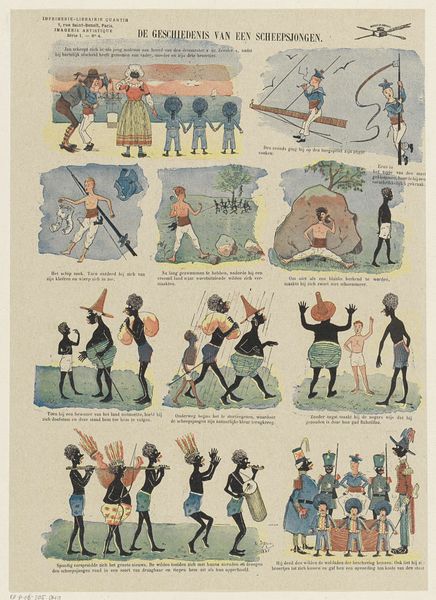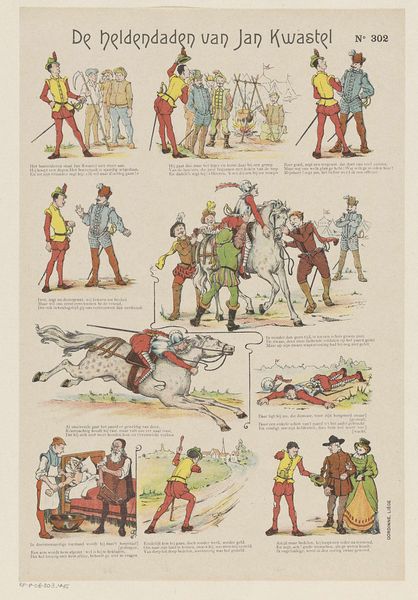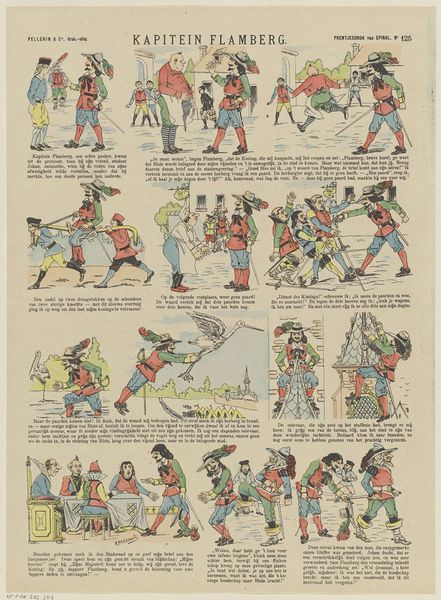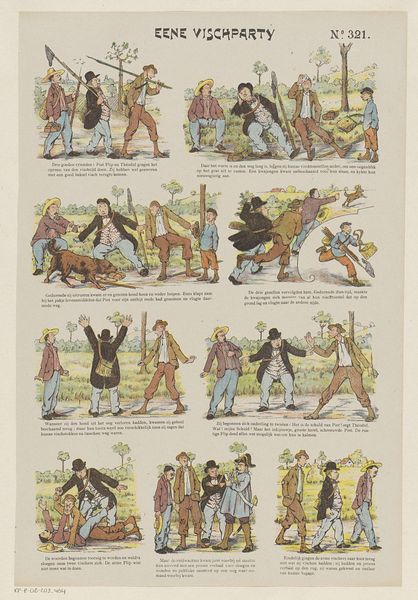
Dimensions: height 399 mm, width 270 mm
Copyright: Rijks Museum: Open Domain
Curator: I’m drawn in by the movement. It feels chaotic, with all these figures dashing about on a washed-out plane. There is also, to my eye, a rather offensive element in the caricature. What is this exactly? Editor: You're right, it is evocative in a slightly disquieting way. The artwork here is a print titled "De beleefdheid van dokter Bobino", or “The politeness of Doctor Bobino”, made between 1894 and 1959. The artist is Gordinne. It’s a genre painting, rendered in watercolor. Let's try and get beyond our initial, perhaps uneasy, impression. The narrative sequence feels a little like panels in a comic. Curator: Right. I am drawn in to how all the separate vignettes seem to float against this non-space, emphasizing that sense of rootlessness, but what might we make of Dr. Bobino himself, so consistently rendered and recurring, yet never exactly engaging the other players? Is he politeness embodied, observing these somewhat foolish actions with detached bemusement? Or a representation of something more problematic, perhaps of colonial tropes in children’s book illustrations from the time? Editor: He becomes a complex, problematic figure through his repetition, yes. The way he’s staged definitely evokes a sense of observation from a removed position, giving power and judgment over what unfolds. Looking closely, the landscape elements are quite minimal, so really everything concentrates on the central figure and the somewhat absurd nature of human actions… the figures running pell-mell across the scene, or riding that wonderfully awkward-looking bicycle. This allows the image, whatever its original intended function, to ask very pertinent questions regarding spectacle and the role of the ‘viewer’ implicit in all viewing. Curator: Precisely, he stages, directs and orchestrates a particular brand of narrative...a reflection perhaps on the observer's perspective embedded within such genre pieces, almost self-aware in its construction of visual commentary. Even now, it provokes that reflective questioning and awareness, pushing our perspectives around notions of culture. Editor: Indeed, it urges an essential re-examination, making it an ongoing, actively potent dialogue rather than merely a relic of art history.
Comments
No comments
Be the first to comment and join the conversation on the ultimate creative platform.
